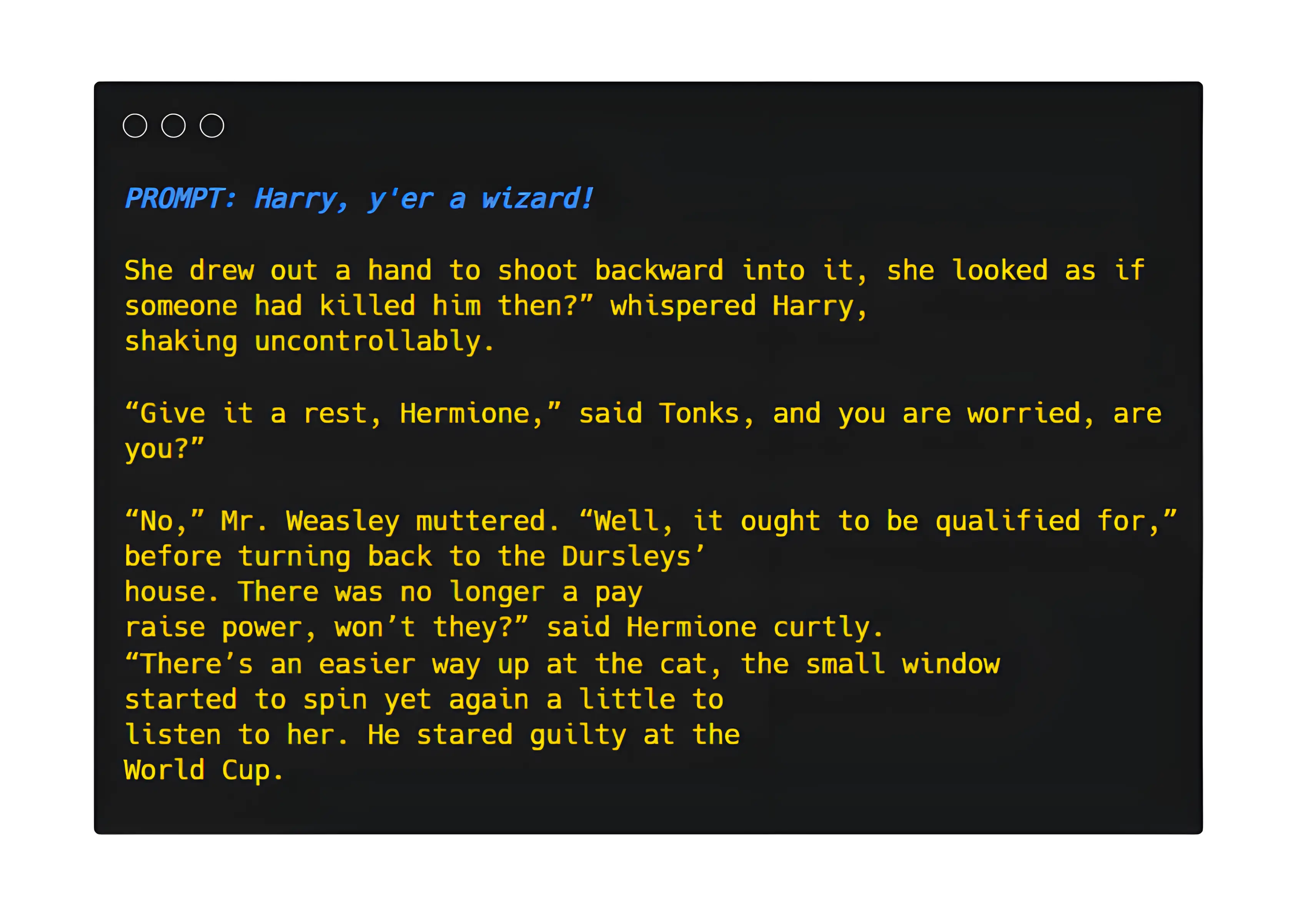Ever wondered what would happen if you let AI loose on the magical world of Harry Potter? That's exactly what I set out to discover in this project, drawing inspiration from Andrej Karpathy's legendary work on neural language models. At its core, this is a character-level Transformer model trained to generate text in the style of J.K. Rowling's beloved series, working at the character level for a more granular understanding of language patterns and a deeper technical challenge.
The Dataset and Approach
The model was trained on the complete Harry Potter series, sourced from Formcept's Github repository. While this dataset (roughly 1.1M characters) is modest compared to the massive corpora used by models like GPT-3, it provides an excellent playground for experimenting with transformer architectures and understanding their inner workings. The implementation uses PyTorch and PyTorch Lightning, combining the power of modern deep learning frameworks with clean, maintainable code.
Technical Architecture
The architecture includes:
- 8 transformer layers with 16 attention heads
- 512-dimensional embeddings for rich character representations
- Context window of 32 characters for local pattern learning
- Dropout rate of 0.1 for regularization
Training was conducted on Kaggle's T4 GPUs, utilizing parallel processing across two units with a substantial batch size of 512 and the AdamW optimizer (learning rate: 0.001). The model trained for 5 epochs over approximately 10 hours, learning to capture everything from character names and magical spells to distinctive British English patterns.
Results: Learning to "Speak Wizard"
The generated text, while not publishing-ready, shows fascinating patterns in how the model learned to mimic Rowling's writing style. It captures:
- Proper punctuation and dialogue formatting
- Consistent context within its 32-character window
- New, plausible-sounding spells and magical terms
The model learned to distinguish between character voices and magical terminology, creating text that feels authentically Harry Potter-esque even when it doesn't make perfect narrative sense.
Key Insights
This project served as an excellent refresher on PyTorch and Lightning while providing deep insights into transformer architecture and the challenges of character-level language modeling. Watching the AI gradually learn to "speak wizard" highlighted how transformers can capture style, tone, and domain-specific vocabulary from relatively small datasets.
It's a perfect example of how modern language models can internalize not just grammar and syntax, but the distinctive voice and magical vocabulary that makes the wizarding world so captivating.
